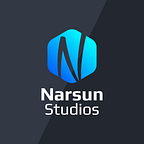ENHANCING MARKETING CAMPAIGNS THROUGH IMMERSIVE EXPERIENCES
THE IMPACT OF AR AND VR
In recent years, augmented reality (AR) and virtual reality (VR) have emerged as powerful tools within marketing strategies. These innovative technologies offer brands the ability to craft immersive experiences that captivate their audience, igniting curiosity, nurturing engagement, and generating excitement. Let’s dig deeper into the transformative potential of AR and VR in marketing campaigns.
AUGMENTED REALITY (AR) AND ITS ROLE IN MARKETING
AR technology enables the seamless integration of digital elements into the real world, paving the way for interactive and captivating marketing experiences. Within marketing campaigns, AR facilitates the creation of engaging interactions with customers.
For instance, envision a clothing brand leveraging AR to enable customers to virtually “try on” outfits, eliminating the need for physical trials. Similarly, furniture companies can utilize AR to showcase how their products would fit and complement a customer’s living space, all from the comfort of their home.
The primary advantage of incorporating AR into marketing lies in its capacity to deliver personalized experiences. By granting customers the ability to visualize products within their context or virtually test them out, brands empower informed decision-making. Consequently, this fosters a deeper connection with the brand, driving both sales and customer loyalty.
By leveraging the immersive capabilities of AR and VR technologies, brands can revolutionize their marketing campaigns, offering unparalleled experiences that resonate with their audience on a profound level.
UTILIZING VIRTUAL REALITY (VR) IN MARKETING INITIATIVES
Virtual reality represents a technological advancement enabling users to immerse themselves in entirely digital realms. Within marketing endeavors, VR serves as a powerful tool for crafting experiences that transport consumers to alternate settings or eras. For instance, a travel agency could leverage VR to simulate a destination visit, offering customers a glimpse of the experience from the comfort of their homes. Similarly, an automotive brand might employ VR to provide virtual test drives, eliminating the need for physical dealership visits.
The primary advantage of integrating VR into marketing campaigns lies in its capacity to generate memorable and shareable encounters. By enveloping consumers in digital environments, brands can orchestrate experiences that stand out and linger in consumers’ memories long after the campaign concludes. Furthermore, VR content often garners significant traction on social media platforms, enabling brands to amplify campaign reach and bolster brand visibility.
Augmented reality (AR) and virtual reality (VR) emerge as potent assets for nurturing intrigue, engagement, and enthusiasm in marketing endeavors. These technologies empower consumers to engage with products and services in novel and interactive ways, fostering lasting impressions beyond the campaign’s duration. Whether it’s a fashion label seeking to deliver personalized experiences or a travel enterprise aiming to evoke distant locales, AR and VR represent indispensable considerations for future marketing ventures.
Apart from the advantages of AR and VR outlined earlier, there exist various other avenues where these technologies can be leveraged within marketing strategies. Here are several additional examples:
DEMONSTRATIONS OF PRODUCTS
AR and VR offer avenues for showcasing product functionalities or emphasizing distinctive features. For instance, a tech firm might utilize AR to exhibit the functionality of a new smartphone, spotlighting its camera capabilities and other attributes.
BRAND NARRATIVE
AR and VR present opportunities for narrating brand stories in a captivating and interactive manner. For instance, a corporation could employ VR to transport customers to its manufacturing facility, providing a behind-the-scenes glimpse into the production process.
GAMIFICATION
AR and VR can facilitate the creation of games and interactive experiences that captivate customers while enhancing brand recognition. For example, a food brand could employ AR to develop a scavenger hunt game where customers hunt for hidden ingredients in a grocery store to win prizes.
TRAINING AND EDUCATION
AR and VR enable the development of immersive training and educational experiences for both employees and customers. For instance, a healthcare firm could utilize VR to train medical professionals on cutting-edge surgical techniques in a safe and controlled virtual environment.
EVENT ENGAGEMENT
AR and VR can be utilized to craft immersive experiences during events, trade shows, and brand activations. For instance, a sports brand could utilize AR to create an interactive display showcasing how various athletic shoes perform on different surfaces.
In essence, AR and VR present boundless opportunities for marketers to captivate and energize customers through immersive experiences. As these technologies advance and become more accessible, we anticipate witnessing even more innovative applications of AR and VR within marketing campaigns in the future.
